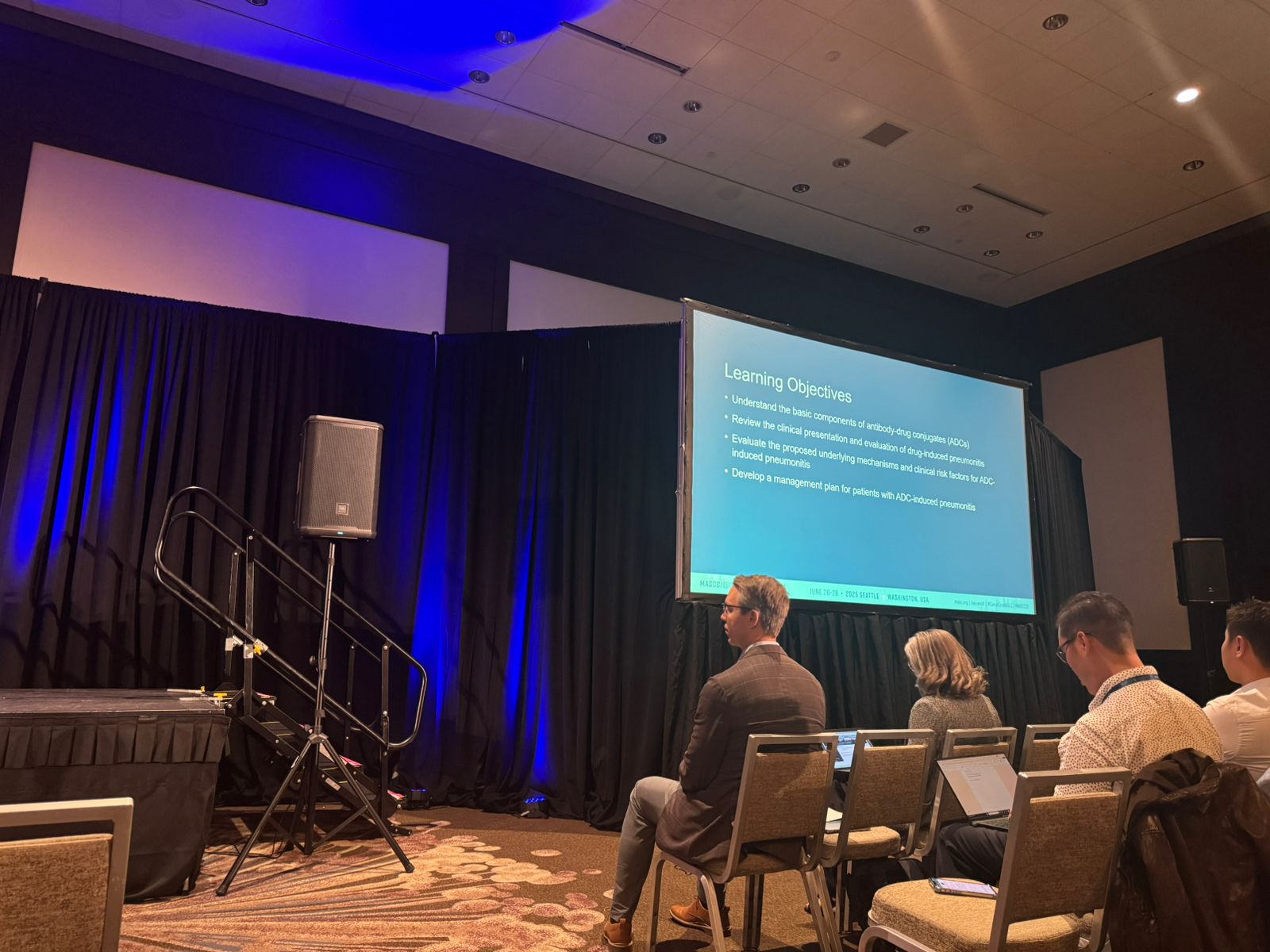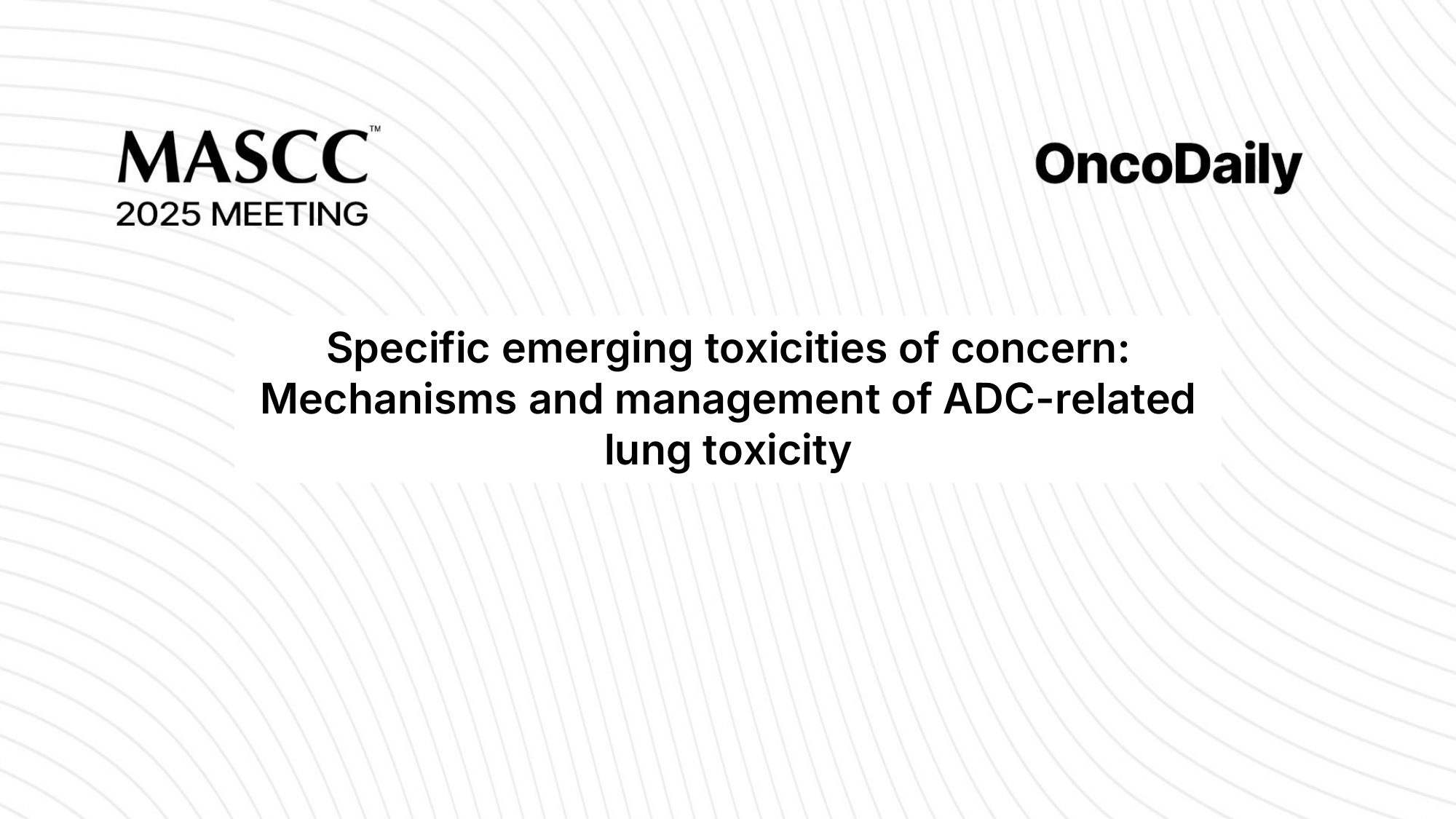Antibody-drug conjugates (ADCs) have transformed cancer therapy by offering targeted cytotoxic delivery, but pulmonary toxicity, particularly pneumonitis, has emerged as a serious complication. At the MASCC 2025 Plenary Session, Dr. Greta Bridwell, Assistant Professor of Medicine at Vanderbilt University and Director of the Pulmonary Oncology Clinic, delivered an in-depth presentation on the mechanisms, risk factors, and clinical management of ADC-induced lung toxicity.

What Are ADCs and Why Are They Used?
ADCs are engineered therapeutics that combine a monoclonal antibody, a cytotoxic payload, and a linker. The antibody selectively binds tumor-associated antigens, ideally overexpressed in cancer cells but minimally present in healthy tissue. Linkers may be cleavable or non-cleavable, impacting the stability of the complex. The payload includes potent agents such as tubulin inhibitors, DNA-damaging agents, or topoisomerase I inhibitors.
A crucial pharmacologic factor is the drug-to-antibody ratio (DAR); a higher DAR (>4) correlates with increased toxicity risk. These “magic bullets” offer targeted efficacy but may unintentionally release toxins in non-target tissues due to linker instability, off-target antigen expression, or bystander killing effects.
How Does ADC-Induced Pneumonitis Present?
Patients often present with dyspnea, hypoxemia, cough, and fever, with onset typically several weeks to months after therapy initiation. Diagnosis remains clinical and is complicated by the lack of pathognomonic features. It requires exclusion of mimicking conditions such as infection, lymphangitic spread, exacerbation of existing lung disease, or pulmonary edema.
Investigations include imaging, bronchoscopy (often nonspecific), and lab testing to rule out infections. Pulmonary function tests may be useful for monitoring, though not in acute diagnosis. Ultimately, ADC-related pneumonitis remains a diagnosis of exclusion.
Incidence, Risk Factors, and Mechanisms
Based on pooled analyses across 120 clinical studies (n=20,119), the overall incidence of pneumonitis was 4.4% for all grades and 2.35% for grade ≥3. Time to onset averaged 5.8 months. Combination therapies showed higher incidence than monotherapy.
Risk appears to vary by tumor type and ADC agent:
- Breast cancer: 10.8% incidence, with 11.5% mortality among those affected
- NSCLC: 24% incidence, including 3 fatal cases
- Gastric/GEJ cancer: 7.7%, with a median onset of 84.5 days
- Colorectal: 6.4%, including fatal outcomes
- Uterine carcinosarcoma: 9 cases in a 34-patient cohort
The widely used trastuzumab deruxtecan (T-DXd) was linked to pneumonitis in 11.4% of patients overall. The risk increased in patients with multiple prior therapies (e.g., CDK4/6 inhibitors) and potentially varied by ethnicity, with Japan reporting the highest rates of interstitial lung disease (ILD).

Component-level analysis revealed:
- DNA-damaging payloads were associated with higher toxicity (though not statistically significant)
- Cleavable linkers trended toward increased risk
- Higher DARs (>4) significantly elevated incidence
Compared to trastuzumab emtansine (T-DM1), which had only a 0.5% ILD incidence, T-DXd appears substantially more toxic to the lungs.
Clinical Management Strategies
Management depends on severity:
- Grade 1: Hold ADC, monitor, and reassess with imaging in 6–8 weeks. Corticosteroids are usually unnecessary.
- Grade 2: Hold therapy, initiate oral corticosteroids at 1 mg/kg for 14 days, followed by a taper.
- Grade ≥3 or worsening: Hospitalization, IV pulse corticosteroids (500–1000 mg/day), and longer tapering protocols. For refractory cases, adjunctive immunosuppressive therapies such as mycophenolate, cyclophosphamide, or infliximab may be required.
Whether to reinitiate ADC therapy depends on full clinical resolution. In many cases, permanent discontinuation is warranted.
Key Takeaways
Dr. Bridwell emphasized that vigilant monitoring, early recognition, and multidisciplinary collaboration are essential for minimizing harm while leveraging the benefits of ADCs. As these agents become more widely used across solid tumors, awareness of pulmonary toxicity profiles is crucial to balance efficacy with patient safety.
Conclusion
As the use of antibody-drug conjugates expands across solid tumors, awareness of their pulmonary toxicity profile becomes critical. Dr. Greta Bridwell’s MASCC 2025 presentation underscored that ADC-induced pneumonitis, while uncommon, can be serious and even fatal if unrecognized.
Timely diagnosis, risk stratification, and tailored management—ranging from therapy hold to immunosuppressive treatment—are essential to ensure patient safety without compromising therapeutic efficacy. Ongoing vigilance and multidisciplinary collaboration remain key in optimizing outcomes for patients receiving these powerful targeted agents.
